The Funniest, Saddest, and Most Unusual Book of the Year? EVERYTHING SAD IS UNTRUE and its prospects for the Newbery Medal

“A patchwork story is the shame of a refugee” (37)
What stands out about EVERYTHING SAD IS UNTRUE is the way in which Nayeri expertly sews together his patchwork story. He parcels out bits of his past through richly told memories and stories he has heard while interspersing them with moments of comedy. The thousands year old history of Persia with the story of one person. Nayeri will have you crying tears of sadness and then tears of laughter within the span of a single page.
In terms of Newbery criteria, I think what stands out most is the appropriateness of style. The style of the writing is unique in its lack of traditional chapters. The stories do not simply stop, never to be discussed again, but rather they expand and recede, hinting at their importance to the overall narrative. It adds to the imitation of Scheherazade’s 1,001 Nights by pulling you into the story and urging you to read just one more section to see how the pieces will fit together.
ADVERTISEMENT
ADVERTISEMENT
She tells them forever without stopping.
Even this is one of them.
But lunchtime has overtaken me and I cannot finish my report on
what I did this summer. (58)
Nayeri consistently breaks the fourth wall throughout the book, even referring to you as the king who has his “whole life in your hands” (2). Within the first 20 pages Nayeri tells you the quick version of his story but then goes on to say:
You know what? I’m not going to introduce myself. You will know me
by my voice. (11)
and
the quick version of this story is useless. Let’s agree to have a
complicated conversation. If you give me your attention – I know it’s
valuable – I promise I won’t waste it with some “poor me” tale of
immigrant woe. (16)
At the end of this meandering story of patchwork memories you are rewarded with a beautiful quilt that fulfills Nayeri’s promise from the beginning of the story that
We can know and be known to each other, and then we’re not
enemies anymore (1).
EVERYTHING SAD IS UNTRUE is truly a beautiful testament to the power of memory and the stories we choose to tell.
Bio:

Amanda Bishop (she/her) is an elementary school librarian at an independent school in Oklahoma City. When she isn’t reading, she is adding to her endless TBR pile.
Filed under: Book Discussion, Guest Blogger, Heavy Medal Mock
About Steven Engelfried
Steven Engelfried was the Library Services Manager at the Wilsonville Public Library in Oregon until he retired in 2022 after 35 years as a full-time librarian. He served on the 2010 Newbery committee, chaired the 2013 Newbery Committee, and also served on the 2002 Caldecott committee. You can reach him at sengelfried@yahoo.com.
ADVERTISEMENT
ADVERTISEMENT
SLJ Blog Network
One Star Review, Guess Who? (#202)
Review of the Day: My Antarctica by G. Neri, ill. Corban Wilkin
Exclusive: Giant Magical Otters Invade New Hex Vet Graphic Novel | News
Parsing Religion in Public Schools
Take Five: LGBTQIA+ Middle Grade Novels
ADVERTISEMENT



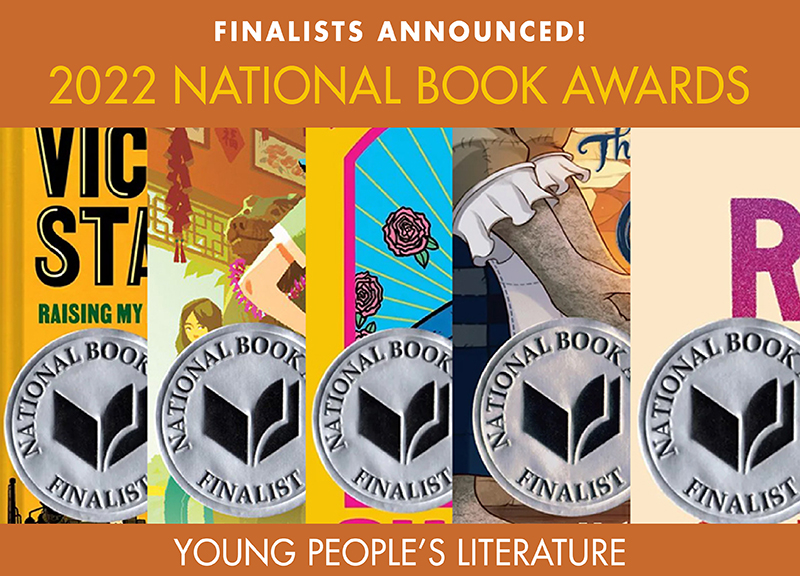
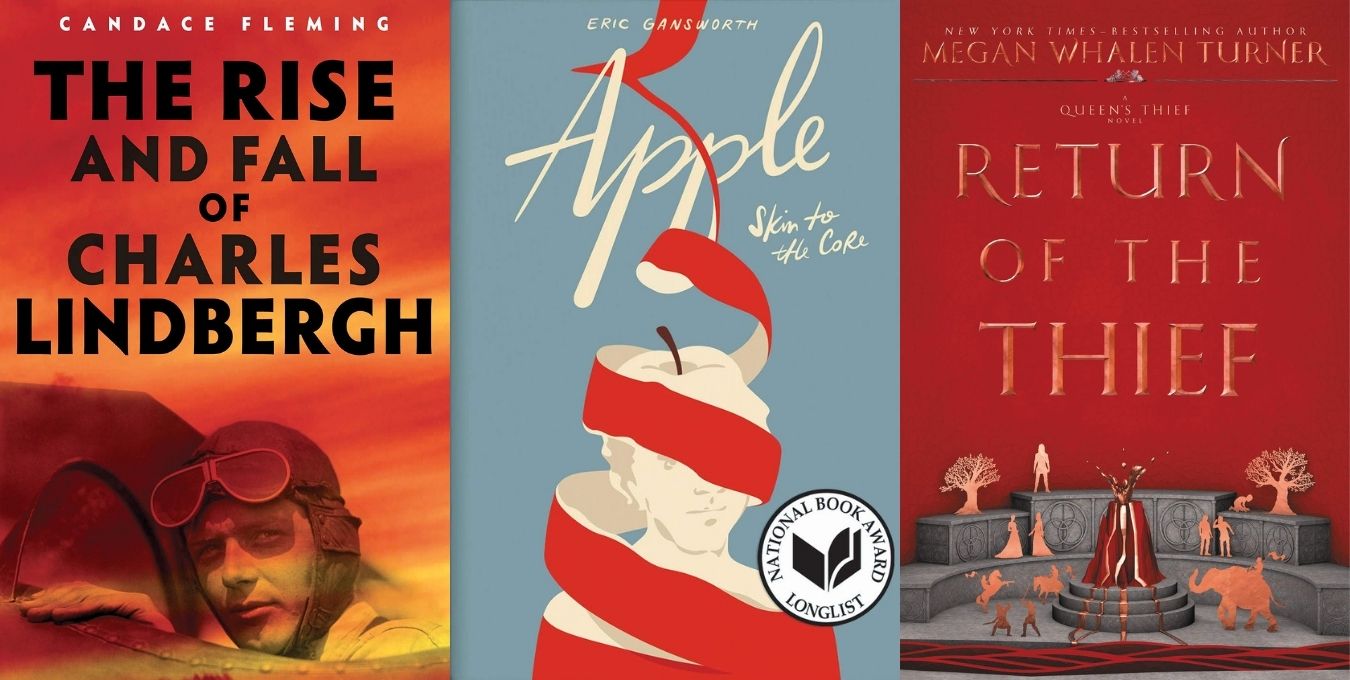
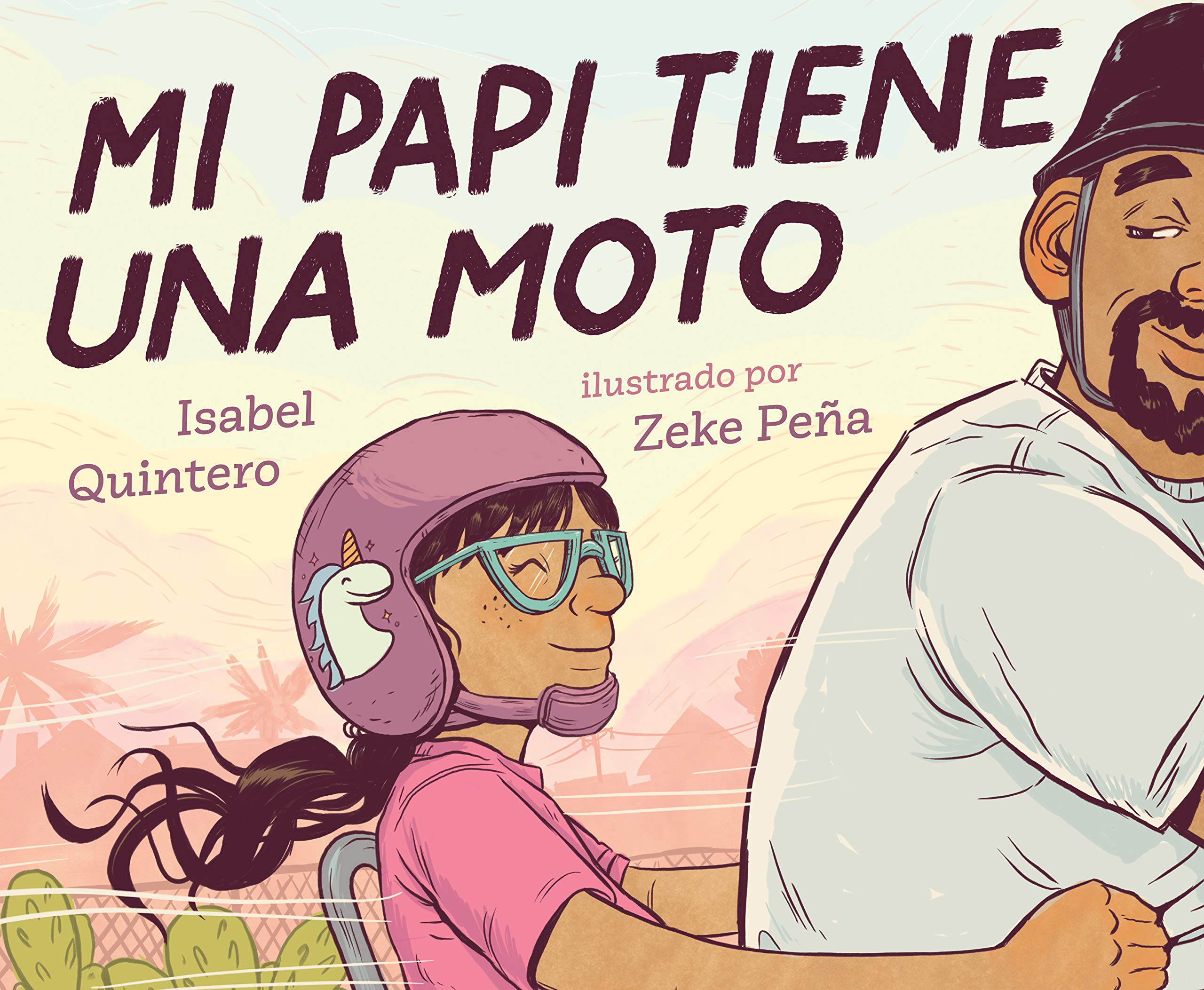
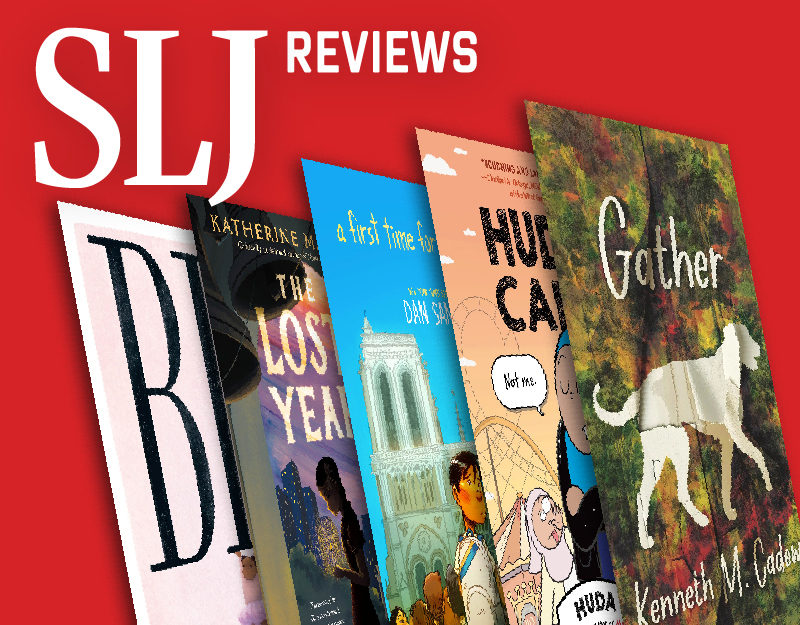
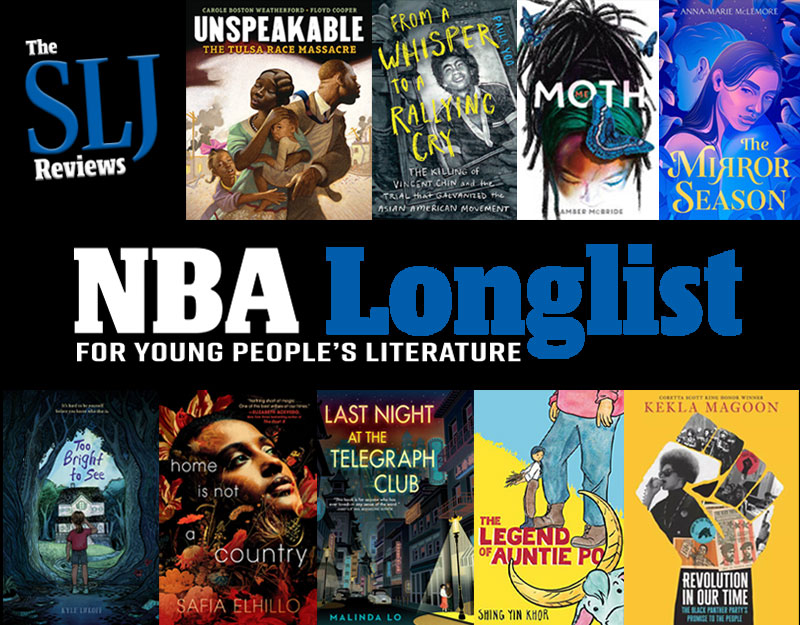
Amanda, thank you for your description on this unusual book. I also love the allusions to Persian history and literature and I have a question about that crucial element of the story. Sometimes critics, or readers, claim that a book is aimed more at adults than at a young audience. Given that many readers of this book won’t be familiar with the tale of Scheherazade or Persian history and culture, how would you respond to that suggestion? I have never accepted the idea that books which ask kids to broaden their knowledge of history are somehow over their heads, but it certainly is a different experience for them to read a book like this one, rather than a book which relies on more contemporary settings and cultural trends. I have a similar question when writers reinvent a classic, like the recent graphic novel version of LITTLE WOMEN set today. If readers no longer read LITTLE WOMEN, is the book merely a stand-alone new work, unattached to the original? To me, the rich allusions in Nayeri’s novel are one of its strongest points, but I wonder if getting the most out of this type of sophisticated work depends more on what the reader brings to it.
Thank you, Amanda, for your excellent analysis. Steven wrote in his earlier post about the Newbery’s “style” criterion, “I would feel a little better if we substituted “execution of style” for “appropriateness of style.” To me, that tension is nowhere clearer among our contenders than in this book. It’s stylish, sure. But is it appropriate? Maybe Katrina will comment further here, but on Goodreads she wrote, “This was good, but there’s no way it’s middle grade. . . I can’t imagine there are very many real kids who can handle this level of narrative complexity. . . If it was YA (or even adult), it’d be great!” Also on Goodreads, DaNae wrote in the same vein, “Beautifully written is an understatement. But it will have a hard time finding young readers who are ready for its complex structure.” I won’t repeat my own snarky Goodreads comment about this book, but will line up behind these sentiments. As far as excellence of presentation “for a child audience” goes, I cannot get behind this book. Of course explaining why could get very lengthy, with, I am sure, side discussions about “what is children’s literature” and “trusting our child readers” and people quoting the manual (“it is so distinguished, in so many ways, that it deserves recognition for the excellence it provides to a small but unique readership”). I think it’d be very interesting to compare this to Rebecca Stead, whose style is also arguably too sophisticated for children but at least, in my view, seems sensitive to the fact that children are reading.
Leonard, I have very mixed feelings about the age recommendation. I agree with all your points, but I wonder sometimes what percentage of an intended audience has to be engaged in order for the book to be legitimately pitched to them. I think there have been several books considered here that raised that issue. Sometimes, a book has inappropriate material for middle-grade readers. But in other cases, if it seems plausibly aimed at a smaller sector, maybe the most well-read or informed, of the age range. Again, I see your point, but I wouldn’t want to go in the other direction and ignore the fact that sometimes, as adults recommending books to young people, it’s o.k. to have high expectations. If the kids reject the book, that’s o.k., too.
Leonard’s concerns about “child audience,” also shared by some other readers he mentions, is probably the key question about this book. The Booklist review states that the author “demands much of readers, but in return he gives them everything. A remarkable work that raises the literary bar in children’s lit.” “Raising the bar” can be part of what makes a book distinguished. I thought that NEW KID raised the bar for realistic/humorous graphic novels last year, for example. But it can also move a book beyond the reach of the child (0-14) audience (which NEW KID certainly didn’t do).
I think EVERYTHING SAD does a lot to acknowledge child readers (in the 12-14 year old range). Daniel seems like a 12 year old telling his story to other 12 year olds whose life experience is almost unimaginably different than his. He acknowledges this and makes overt (though sometimes roundabout) efforts to connect. With the first story about the bull, for example, he kind of mocks the language differences and geographical ignorance, and then brings it back to what makes sense to his audience:
“When I say the words [on the road to Ardestan], people think it may as well be Mars. Or Middle Earth. I could say we drove a chariot pulled by camels and they’d believe me.
But it was a Chevrolet. And we were normal back then.
I wore sneakers with Velcro and had a dad.” (4)
So he has to take the unfamiliar and make connections with the readers, and he does this throughout. He’s also doing the same thing as a character when he tells his stories to his classmates.
It’s almost the opposite of a book like SAL AND GABI FIX THE UNIVERSE. There, the narrator expects that the readers share all kinds of reference points with his life. Yes, there are robots and multiple universes, but also a stream of pop culture references that tell you that these kids you’re reading about are just like you (Bruce Lee, Coke Zero, Mr. Roboto, The Final Frontier, Lucha Libre, YOLO…all in the first 21 pages). He doesn’t have to explain any of those (though certainly not all kids will get all of them).
Nayeri (as author and narrator), meanwhile, assumes that his readers are nothing like him, and won’t understand the touchpoints from his past life, or his family, or his culture. So he supports his tales of the unfamiliar with explanations to give us context. It’s challenging to the reader, but I do think he provides enough to help them through. Because he does that consistently, with a distinct, engaging voice, we kind of get used to it, and it gets easier as the book goes forward.
In THE LIST OF THINGS THAT WILL NOT CHANGE, Bea as narrator gives readers a similar, but less demanding challenge, by not telling things completely, or in order, but still taking care that we don’t get too confused or lost, and that we connect enough with the narrator to want to follow where she’s taking us. I had the same experience with EVERYTHING SAD: not sure where it’s going, but following okay with enough background to not get lost…and very much on Daniel’s side, so willing to keep reading even with that uncertainty.
Steven, my question is at what point does raising the bar just mean an adult book with a child narrator? EVERYTHING SAD reminds me of something like Stephen King’s The Body which has a 12-year-old protagonist (and was made into the film, Stand by Me.) I am looking at an online preview of The Body’s first chapter, and it feels very Nayeri-esque to me. Here is the first paragraph: “The most important things are the hardest things to say. They are the things you get ashamed of, because words diminish them–words shrink things that seemed limitless when they were in your head to no more than living size when they’re brought out. But it’s more than that, isn’t it? The most important things lie too close to wherever your secret heart is buried, like landmarks to a treasure your enemies would love to steal away. And you may make revelations that cost you dearly only to have people look at you in a funny way, not understanding what you’ve said at all, or why you thought it was so important that you almost cried while you were saying it.” I think this reads not all that differently from, say, pages 84-85 of EVERYTHING SAD where Nayeri holds forth on what’s “important” in a telling, in sentences like, “But wanting to please you is important too. That’s what you want, after all: to be pleased. You’d be shocked how few people want what you want.” Heck, those sentences could have followed King’s with little loss of continuity in voice or style.
And scenes in Stand By Me like the vomit scene and the leech scene feel similar to scenes in EVERYTHING SAD like when the kid explodes his tongue with a car battery. In that light, the disquisition on poop doesn’t feel to me like an attempt at kid appeal.
I admit I am struggling to define why this book feels like a straight-up adult book to me. For all of Rebecca Stead’s technique, I feel like her attempts to re-capture and express what it feels like to be a child does make her a writer of children’s literature and not a stylish memoirist. You mention SAL AND GABI, which had that wonderful line about artists making art so that you learn what life feels like to them. I think Stead, for all her sophistication, is still trying communicate what life feels like as a child. I read this year Shannon Hale’s KIND OF A BIG DEAL, which is for older readers. But I still felt that in communicating what life feels like to her, it’s clear Hale herself never outgrew feelings of “childish” imagination, and that’s why she’s such an effective writer for younger readers. I think Wolk’s Wolf Hollow, which reportedly began life as an adult book, successfully became a children’s book (though its power and freshness may well be attributable to its adult origins.) I think that was a good example of “raising the bar” in children’s literature. (Clearly I’m still grappling with how to communicate my thoughts about this book.)
It just occurred to me that the most valuable book to bring into this discussion may be CHANCE. That was another book where I wondered as I was reading it whether I was really reading a children’s book. (It actually felt a lot like reading A Little Prince. Is that a children’s book?) In the end, I concluded that, for the most part I was (with the exception of the end, after Uri reaches Paris). And I think the reason is how Shulevitz invites the child reader to imagine themselves in his shoes. I didn’t get that sense at all from EVERYTHING SAD.
It’s been a while since I read “The Body,” but my remembrance, which I think isn’t contradicted by that opening passage, is that King is addressing adults. Telling them a story about kids, but reminiscing, along with his adult audience, about what it was like to be a kid. King wants adults to walk easily in the shoes of those kids, because he assumes his intended readers kind of know what it was like to be at that stage of life in that era in America, even if they didn’t live it exactly.
When Nayeri says “But wanting to please you is important too,” though, I assumed he’s addressing kids about his own age, not adults. 12 year olds who are like him in some ways, and trying to identify the points that serve as common ground. But also recognizing that they are not like him in many ways, so he must explain stuff from his experiences that are almost unimaginably removed from the lives they’re living. I looked at the complex, involved stories that he fills the pages with as sort of a fully extension of the much shorter pieces he shares orally in class. If he did wind up filling those pages with too many twists and jumps that are too hard for younger readers to follow, or if he filled them with too much wisdom and advice that sounds like it’s from an adult, to other adults, then my reading probably doesn’t hold up.
One of the reasons I think the Persian history and Scheherazade references works is that Daniel assumes that the readers he’s addressing don’t know much about them. Not that he lays out all the background we need in a straightforward way…he’s not that kind of storyteller. Also, he wants us to know those stories because of how they apply to himself and his family. The story of Khosrou the First may be new, but it also tells where Daniel got his real name. And leads into the comparison that continues throughout, where Daniel compares himself, usually with self-mocking, to heroes. (12-13). That context and relevance that he provides within the narrative, is one of the things that made me feel that this really is a book for older kids, not just teens or (this was my first thought) an adult reader like myself.
I reread this book over last weekend and was just as entranced by the unusual storytelling style. The seemingly meandering way in which Nayeri relates myths and legends to his own experiences is so enthralling.
I do understand how the age placement of this book could cause controversy. Nayeri does have a complex style that I’m not sure would appeal to reluctant readers. Then again, his ruminations on poop, Van Damme movies and his family’s predicament is engaging and unique. I was a bit surprised that amazon, for example, had the book listed for ages 9-12, but Daniel is in the seventh grade, so I suppose that makes sense. This is one of those books that walks the delicate line between middle grade and YA. I do think the struggles Daniel has with coming to terms with his father’s abandonment and his feelings of isolation and displacement are relatable to middle grade as well as YA readers. In one scene, Daniel is in his room reading The Hobbit and thinking about lembas bread and the joyful reunion of family. The next, he is thrust into a terrifying situation involving nailing down shingles during a tornado. Nayeri’s gift of shifting from quiet reflection to terror would definitely keep all readers on their toes.
I did wonder what everyone thought of characterization? Nayeri makes it clear that his mother is the hero of their story, (and she is). However, a Newbery book should, in my opinion, focus on a child who develops agency and learns something about him/herself as the book progresses. Do you feel that Daniel is the focus of the book? What of his sister and the other characters? I did feel his sister was a good character (even if she was a bit unlikable). I also felt that Daniel’s classmates were a bit one-dimensional. Of course, I am not sure if this fact is true because of narrative POV or simply my own thoughts.
I love this book so much and am torn about whether I think it deserves a Newbery or not. Based solely on the writing, the book is definitely a strong contender. Based on age appropriateness, I am simply not sure. It is truly a beautiful book. I do hope that it receives recognition of some sort as the writing is definitely stellar and unique.
Meredith asks about who the hero of the book is. I really felt it was Daniel, though he himself points to his mother. His point of view is strong and vivid, so even as he tells us about his mother being “unstoppable,” or how his father “for one day became the king of White Water Rapids” (342), we experience what those mean to him.
I think the one-dimensional classmates do come from Daniel’s POV. There are hints that they are a little more interested in his stories than they let on, and even Brandon can act decently at times (though he was paid for it (340)). I felt that way about Mrs. Miller too. Daniel kind of acts like she’s setting him up for teasing and humiliation by having him share stories with the class through the year, but we can see it’s actually helping the kids to understand and get to know him. It’s only towards the end that he addresses how important she was to him:
“I thought about the long year and everything she’d done for me. How she had always known which to be – a teacher who speaks or a teacher who listens…” (329)
When it comes to adult/children and the Newbery age range, I always remember something I read by someone (maybe it was Nina on this blog?) which suggested that even though a book may be read and appreciated by a 12-14 year old, that 12-14 year old might not appreciate, or even understand, the things that are most distinguished about the book. My personal example is Huckleberry Finn, which I read at 10 or 11 and enjoyed it for the same reasons I liked Tom Sawyer: fun and adventure, kids doing stuff I wish I could. But I’m sure I missed the stuff about racism and hypocrisy and most or all of the satirical elements until I re-read it in high school. So I’ll make a stab at applying that process to EVERYTHING SAD using one scene (apologies in advance for the length, but there’s just so much to say about this book):
One literary device, which relates to style and plot especially, but also character, is the way the author uses multiple motifs that recur throughout, and build in importance. The cutting of the bull’s throat is important. So is Sheep Sheep, Daniels’s stuffed animal. Daniel brings those two together when they have to leave Sheep Sheep behind while fleeing Iran.
That line “like the bull,” is all readers need to conjure back that image from the opening of the book, partly because he’s referred back to that scene several times along the way. We know how important Sheep Sheep is because he explains it in the preceding pages leading up to the airport. A writer for adults might have left readers to make that bull/Sheep Sheep connection, but Daniel makes it directly, with a child audience in mind. A writer for younger children might have had to spell it more (such as: “like the bull that Baba Haji killed when I was three years old”).
This passage also makes a reference to drug smuggling; he had told the story about his dad smuggling drugs in a suitcase earlier (161-162). He did it vividly enough that when we read “we’d just make custom linings for a luggage set,” we get it. 12-14 year-old will remember that too. I’m not sure that age would get the tinge of irony in that sentence though. As an adult reader I’m not certain either, but I believe he means to poke at his father’s criminal act, slightly mocking his family’s morals.
The child reader will also get the dark humor of his older sister’s reaction:
The already powerful scene takes a twist, as Daniel realizes “that after being friends with him my whole life, I am supposed to leave Mr. Sheep Sheep to die.” Then:
I don’t see anything in there that wouldn’t fully resonate with an older child reader. The loss of the toy; the desperation of their flight; the betrayal of the father; Daniel’s realization that he hast to let it all happen. The implication that Daniel too would “reach out for a hug” and “beg” if it would change his father’s mind, but it won’t. And as the book goes on, that reader can also gain some perspective on his father’s desertion, as Daniel does to some degree.
This is a complex few pages, and challenging, but I feel like it is carefully crafted with a child audience in mind. And Najeri takes that same care with other similarly sophisticated elements of the story. Those 12-14 year-olds may well get confused about the details of Daniel’s family history, and have trouble keeping the legends and folklore straight…so did I. But to me, the stuff that matters most in the book, the emotional impact, the rich characters, the vivid and insightful window into one family’s history, will not be beyond the understandings, appreciations, and abilities of kids who are just about Daniel’s age.
Steven, thanks for the great analysis. I can see this section of the book working for a child reader. The other section that I thought would not feel out of place in a children’s book is also towards the end, when Daniel’s father visits his school and is told by one of his classmates, “Your dad’s awesome” (327). In general, I think the child-friendly parts of this book are when Daniel is actually and undistractedly recounting events, with needed explanations as you point out. I am willing to concede all that. But I think too much of this book isn’t that. I think necessary context too often gives way to unnecessarily extended glossing and navel gazing. Above you cite the very first pages and how Daniel helps the reader with Ardestan by invoking Mars and Middle Earth. But that doesn’t help with the words upon words before that about liars and sinners and poets remembering dreams and stories beginning with promises and ending with knowing and a clenching heart. In the first lines of the book Daniel basically declares himself a poet, and much of the book reads like a self-declared poet in love with his own voice, a mansplainer. I don’t think kids are mansplainers. Sure they will go on and on about their favorite things (Conor from Kadohata’s Checked just jumped to mind) but out of love for subject. Even though Daniel promises no story will surpass his “in wonder and coolness”, I rarely got the sense that’s why he’s telling his story (because a realistic kid would just tell us the story.) A final note: in looking up the first pages, I see again the book’s epigraphs. I defy anyone to convince me any of those epigraphs, let alone all three, credibly lead off a children’s book (in terms of relevance and respect for child readers.)
I’m trying to get my head around Daniel as a “mansplainer.” If I understand the term correctly, one element of “mansplaining” is that you’re explaining something obvious that the listener probably already knows, in a patronizing way. Daniel, though, tells his story to listeners in the classroom (and readers) who, at least from his point of view, have hardly any comprehension of what his experiences could be like. He does love his own story to some degree, and his own voice, but most good storytellers do. He chooses to share far more background and personal opinion than he would need to if he was just giving the facts, but that’s because he wants them to fully understand as much as possible; I don’t see condescension in this. If he does it poorly, or uses too many words or side stories for children to follow, that’s one thing. But I’m not seeing the mansplaining here…
Hmm, OK I will have to look up mansplaining to make sure I am using it correctly….
I agree Daniel is not “explaining something obvious that the listener probably already knows.”
But I did feel like the tone was of assuming he knows more than we do (which to be sure is true about some, but not all, things), which is one sense I was trying to get at. Another is the attitude that we would perforce welcome being educated by the narrator’s long disquistions. Finally, I did find the narration condescending, which is another sense I was getting at, but if you disagree, then, sure, that sense wouldn’t apply. I would submit that Daniel seems to have a low opinion of his classmates. And if that’s the case, why should the reader be any different? (Actually, now that I think of it, maybe Daniel feels like that too precocious kid who other kids won’t give the time of day to, but has an audience of adults who indulge him. Like us!)
Good point about the epigraphs, Leonard. I think of obscure epigraphs as an adult fiction thing…not a thing I like about adult fiction, and I usually skip them, but still: adults are used to that. I browsed through books on my shelf and though only a few had epigraphs, none of them are anything close to Dostoevsky on suffering. SHOW ME A SIGN has a clear quote from “the first deaf teacher in America.” WE DREAM OF SPACE is two short sentences from Christa McAuliffe, which makes perfect sense. KENT STATE quotes a pop song (and attributes it to the singer of the hit version, rather than the songwriters, which always annoys me, but isn’t really relevant to this). For EFREN DIVIDED, it’s Dr. Seuss.
Going back a few years to one of my Newbery years, though, SPLENDORS AND GLOOMS opens with a canto from “Adonais” by Percy Bysshe Shelley. The passage does include the phrase “Splendours and Glooms,” so kids can see the source of the title. But I don’t think many kids in that 12-14 year old range will glean anything of meaning from the passage, if they even read ti. Like EVERYTHING SAD, SPLENDORS is a fairly sophisticated novel that will be challenging to readers who are right at home with THE ONE AND ONLY IVAN or THREE TIMES LUCKY (also from that year).
I definitely agree that those epigraphs were not chosen with children in mind. I just don’t see epigraphs as the things that “lead off a children’s book.” Readers can take them or leave them. To me, the lead off of the book is the opening pages. And we’ve already shared our different opinions of those…
I am just spitballing now (like Brandon Goff). But on page 15, I see that Daniel actually refers to the “kid version” of his story, which he calls “useless.”
This book is the best thing I have read all year, but I agree with the concerns about age. I bought it for my library’s middle grade collection but ending up giving it to our YA librarian and recommending that it be purchased for the adult collection as well. The writing is exquisite and the story compelling – even for those like me who only have a vague knowledge of Scheherazade. It is how Neyari took the suffering of his family and wove it into something so full of hope. What kid would I give it too? A refugee kid, and we have plenty of those in our area. Unlike some of the “issue” books written for kids – about mental illness, abuse, neglect, this book does not oppress the reader with darkness. I am reading A Game of Fox and Squirrels right now. It is beautifully written but I have trouble picking it up, the anxiety is so palpable. Everything Sad is Untrue did the opposite – I hung on every word. What it seems to me – most authors for the middle grade age level seek to capture the middle grade voice. Neyari is telling his experiences as a 12 year old, but very much from his perspective as an adult, something that has already been discussed in previous posts. It brings to mind To Kill a Mockingbird and Wolf Hollow (which was written as an adult book). Maybe not a Newbery – but perhaps a Pulitzer!
I just read most of EVERYTHING SAD this morning and really enjoyed following Leonard’s and Steven’s conversation about it. I did not, however, enjoy the book itself. As with HOKEY POKEY and ORPHAN ISLAND, I’m baffled by how much people love this.